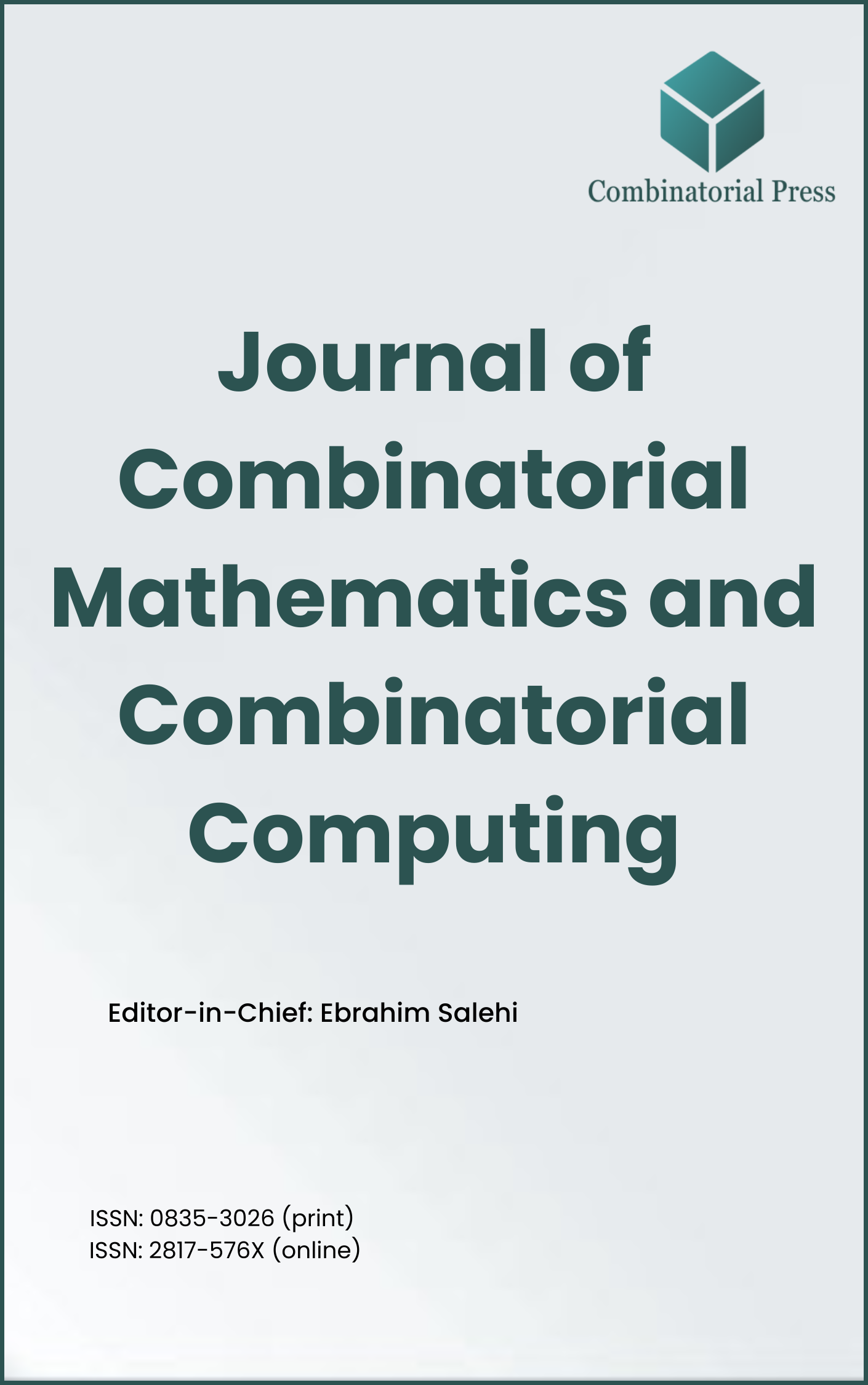
Journal of Combinatorial Mathematics and Combinatorial Computing
ISSN: 0835-3026 (print) 2817-576X (online)
The Journal of Combinatorial Mathematics and Combinatorial Computing (JCMCC) embarked on its publishing journey in April 1987. From 2024 onward, it publishes four volumes per year in March, June, September and December. JCMCC has gained recognition and visibility in the academic community and is indexed in renowned databases such as MathSciNet, Zentralblatt, Engineering Village and Scopus. The scope of the journal includes; Combinatorial Mathematics, Combinatorial Computing, Artificial Intelligence and applications of Artificial Intelligence in various files.
- Research article
- Full Text
- Journal of Combinatorial Mathematics and Combinatorial Computing
- Volume 018
- Pages: 121-124
- Published: 30/06/1995
We deal with a family of undirected Cayley graphs
- Research article
- Full Text
- Journal of Combinatorial Mathematics and Combinatorial Computing
- Volume 018
- Pages: 109-119
- Published: 30/06/1995
There has been a great deal of interest in relating the rank of the adjacency matrix of a graph to other fundamental numbers associated with a graph. We present two results which may be helpful in guiding further development in this area. Firstly, we give a linear time algorithm for finding the rank of any tree which is twice its edge independence number. Secondly, we give a formula for the rank of any grid graph consisting of
- Research article
- Full Text
- Journal of Combinatorial Mathematics and Combinatorial Computing
- Volume 018
- Pages: 97-108
- Published: 30/06/1995
A labeling of the graph
- Research article
- Full Text
- Journal of Combinatorial Mathematics and Combinatorial Computing
- Volume 018
- Pages: 83-96
- Published: 30/06/1995
We define two complete sets
We use known properties of the projective planes of order
- Research article
- Full Text
- Journal of Combinatorial Mathematics and Combinatorial Computing
- Volume 018
- Pages: 65-82
- Published: 30/06/1995
It is shown that for any even integer
- Research article
- Full Text
- Journal of Combinatorial Mathematics and Combinatorial Computing
- Volume 018
- Pages: 57-63
- Published: 30/06/1995
We show that for infinitely many
- Research article
- Full Text
- Journal of Combinatorial Mathematics and Combinatorial Computing
- Volume 018
- Pages: 33-56
- Published: 30/06/1995
- Research article
- Full Text
- Journal of Combinatorial Mathematics and Combinatorial Computing
- Volume 018
- Pages: 11-31
- Published: 30/06/1995
In this paper, we consider a permutation
- Research article
- Full Text
- Journal of Combinatorial Mathematics and Combinatorial Computing
- Volume 018
- Pages: 3-10
- Published: 30/06/1995
The linear vertex-arboricity of a surface
- Research article
- Full Text
- Journal of Combinatorial Mathematics and Combinatorial Computing
- Volume 015
- Pages: 33-45
- Published: 30/04/1994
We consider a pair of MOLS (mutually orthogonal Latin squares) having holes, corresponding to missing sub-MOLS, which are disjoint and spanning. If the two squares are mutual transposes, we say that we have SOLS (self-orthogonal Latin squares) with holes. It is shown that a pair of SOLS with $n$ holes of size
As an application, we prove a result concerning intersection numbers of transversal designs with four groups.





